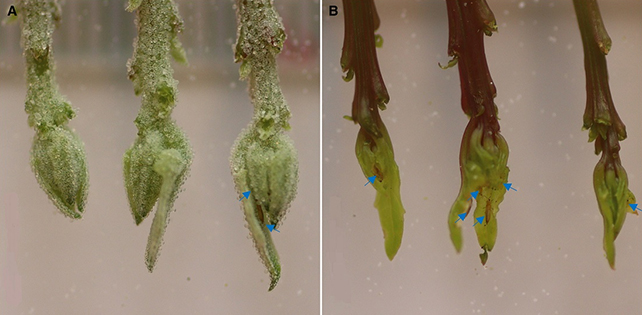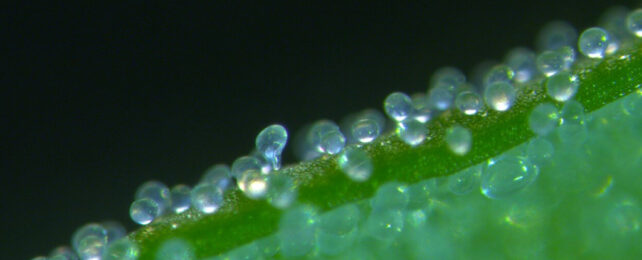As our understanding of the Universe around us grows, so do scientific theories. Like the one that's lasted for more than 100 years, about the function of balloon-like 'bladders' on resilient plants including quinoa.
It was thought that these tiny balloons protected the plants against dangers like drought and salt. Not so, says a new study; in fact, they're designed to ward off different kinds of dangers, in the form of pests and disease.
The discovery was made by researchers who wanted to explore the original hypothesis in more detail. To that end, they cultivated mutant quinoa plants and ice plants without the usual covering of balloons (technically known as epidermal bladder cells or EBCs).

"Whether we poured salt water on the mutant plants without bladder cells or exposed them to drought, they performed brilliantly and against expectations," says biologist Max Moog, from the University of Copenhagen in Denmark. "So, something was wrong."
"On the other hand, we could see that they were heavily infested with small insects – unlike the plants covered with bladder cells."
The researchers suggest that the miniature balloons act as a block to pests, and that when tiny creatures such as thrips try and take a bite of the plant, they end up with a mouthful of toxic solution carried by the EBCs.
Further analysis of the contents of the EBCs revealed one of the ingredients inside them was oxalic acid, which is poisonous to pests. However, there was no more salt present than in surrounding cells, suggesting the idea that these balloons acted as overflow chambers for excess salt was incorrect.
What's more, the team also observed that the mutant, balloon-less plants were more vulnerable to Pseudomonas syringae, the cause of one of the most common bacterial diseases in plants. This could well be down to the way the balloons cover the stomata on the leaves of plants, which is often the route bacteria use to invade.
So why did an inaccurate hypothesis survive for so long? The researchers suggest that past studies may have made inaccurate assumptions based on similar plant species, or on mechanisms similar to EBCs. In addition, research techniques and analysis methods have all improved steadily over time.
There's no doubt plants such as these are highly resistant to abiotic stressors like drought and salt, but it seems that the protection isn't from these EBCs. Instead, it's biotic stressors that the balloons guard against.
It's important to develop hardy, tough plants such as quinoa and ice plants in a world with a changing climate, and the study should help in the cultivation of varieties that are protected against multiple threats.
"Quinoa has been touted as a future-proof crop because it is rich in proteins and highly tolerant of drought and salt, and thus climate change," says biologist Michael Palmgren from the University of Copenhagen.
The research has been published in Current Biology.
